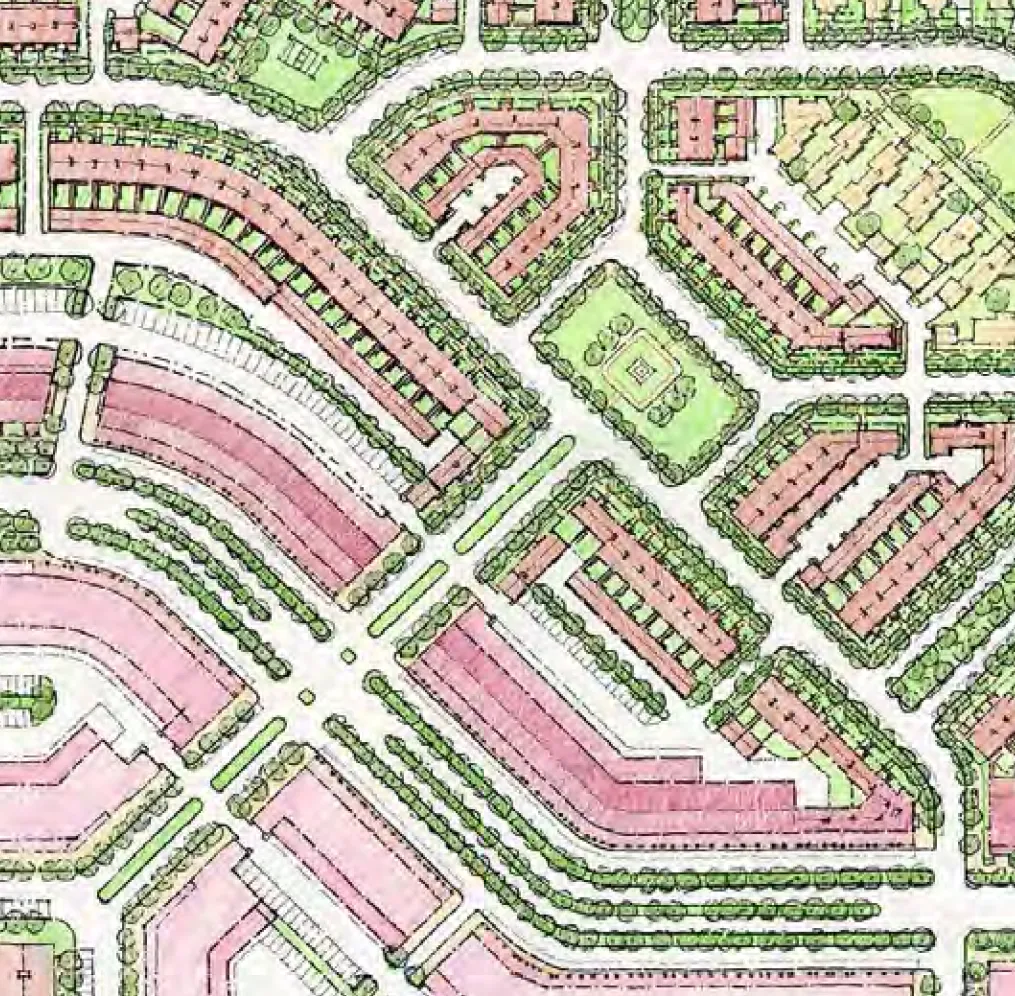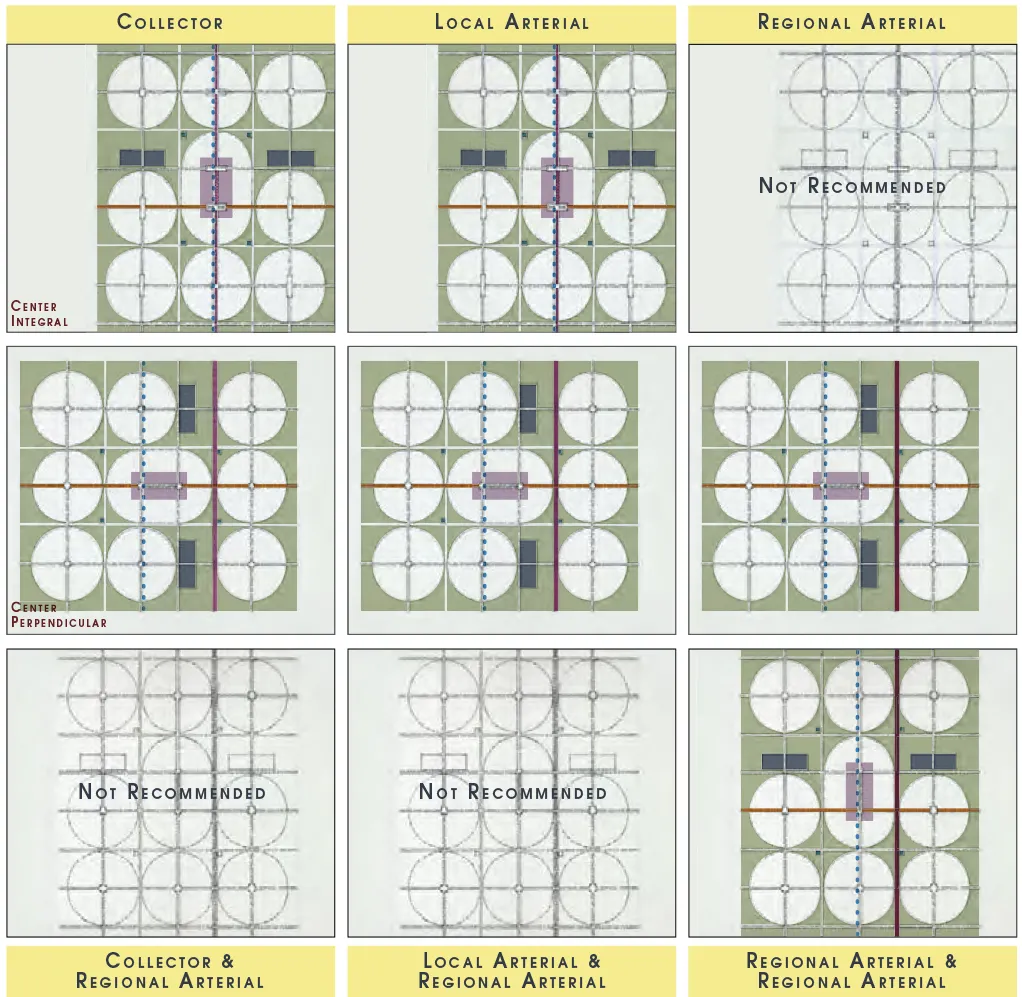Armature
Planning transit and vehicle networks
- Traditional principles, typology, metrics
- Durable community is organized, sustained
Conventional thoroughfare / intersection
- ‘Functional’ classification: weak walkability
Traditional thoroughfare / intersection
- ‘Typological’ classification: strong walkability
Armatures are determined by:
- Scale – local, municipal, regional
- Movement – pedestrian, vehicle, transit
- Distance and speed – low to high
- Interval of intersections – short to long
- Context – rural to urban (sectors /neighb’s)

Transit Network
- Transit stops (rail, bus, feeder, jitney route)
- Gauged to population and integral walk shed
- Town fabric provides amenity and safety
Vehicle Network
- Streets and intersections divide or integrate
- Designed with typological precedent
Pedestrian Network
- Walk-sheds organize at commercial centers
- Social concentration, amenity at transit nodes
- Walksheds may be short, standard, or long
Corridor
All Projects

